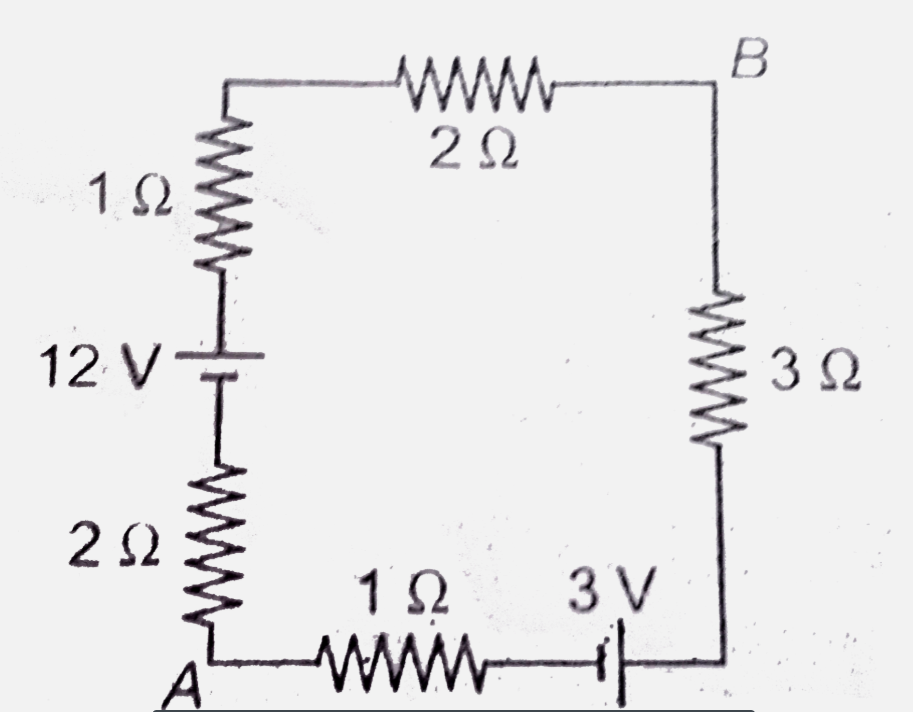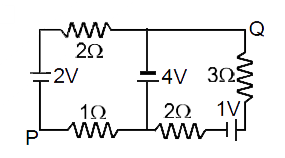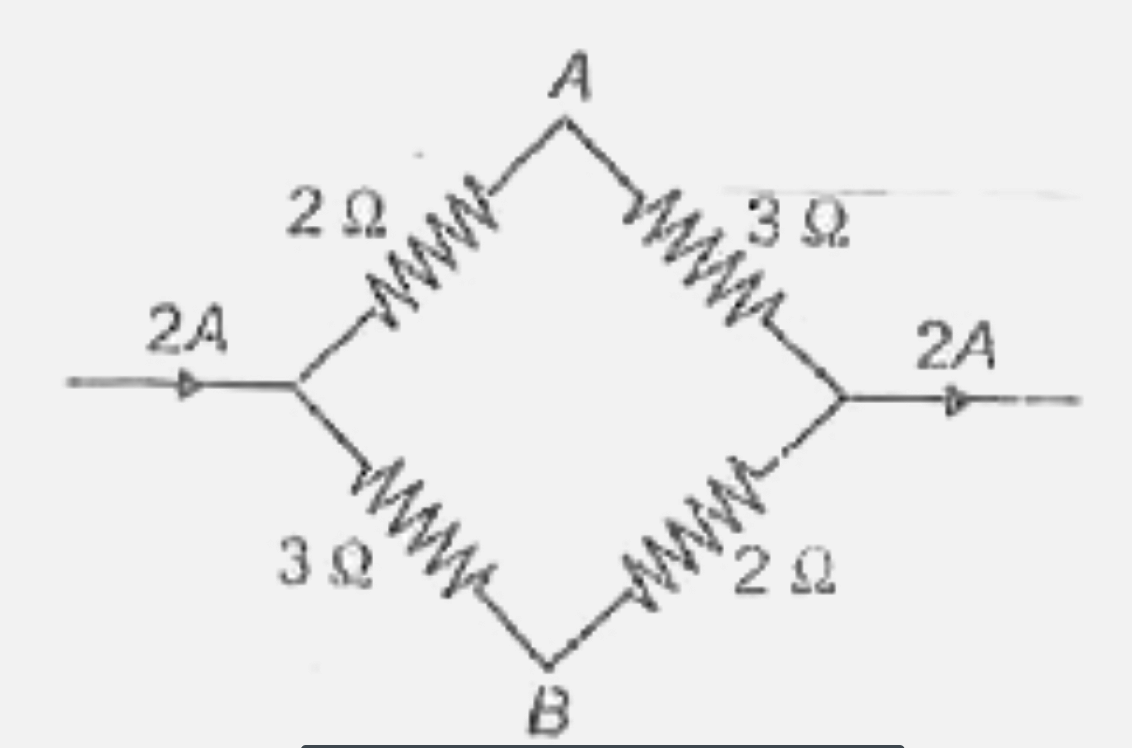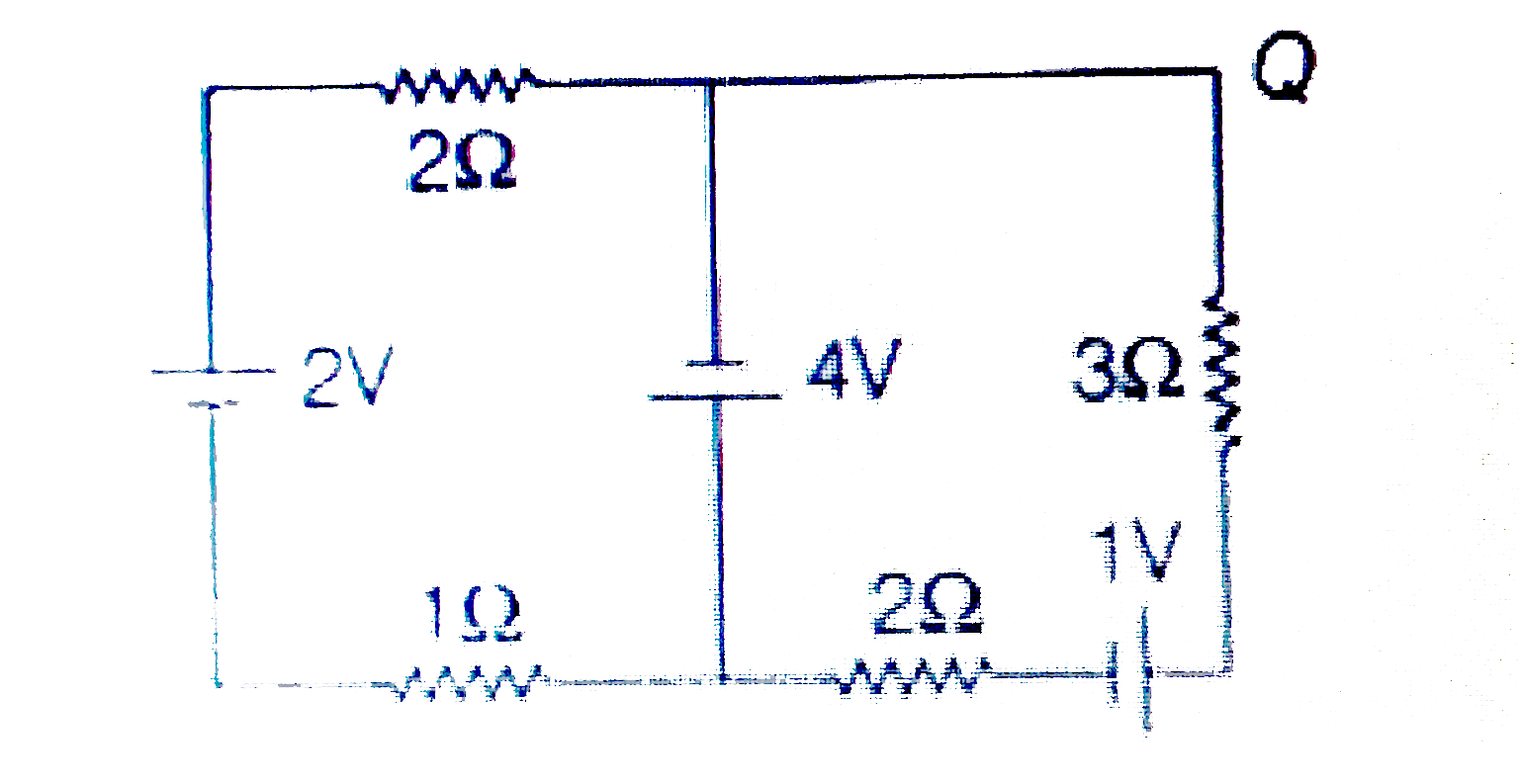The network shown in Fig. is a part of a complete circuit.What is the potential difference VB−VA when the current I is 5A and is decreasing at a rate of 102(A/s) ?

Video Solution
Text Solution
The correct Answer is:A
didt=103A/s
∴ Induced emf across inductance
|e|=(5×10−3)(103)V
=5V
Since, the current is decreasing the polarity of this emf would be so as to increase the existing current.The circuit can be redrawn as
Now VA−5+15+5=VB
∴VA−VB=−15V
or VB−VA=15Vs


|
Updated on:21/07/2023
Topper's Solved these Questions
- BOOK - RESONANCECHAPTER - ELECTROMAGNETIC INDUCTIONEXERCISE - Exercis-1 PART 251videos
ELECTROMAGNETIC INDUCTION
- BOOK - RESONANCECHAPTER - ELECTROMAGNETIC INDUCTIONEXERCISE - Exercis-2 PART 115videos
ELECTROMAGNETIC INDUCTION
- BOOK - RESONANCECHAPTER - ELECTROMAGNETIC INDUCTIONEXERCISE - Problem12videos
ELECTROMAGNETIC INDUCTION
- BOOK - RESONANCECHAPTER - ELECTRODYNAMICSEXERCISE - Advanced level problems31videos
ELECTRODYNAMICS
- BOOK - RESONANCECHAPTER - ELECTROSTATICSEXERCISE - HLP39videos
ELECTROSTATICS
Similar Questions
Knowledge Check
- Question 1 - Select One
The network shown in the figure is a part of complete circuit. What is the potential difference VB−VA when the current I is 5A and is decreasing at a rate of 103A/s?
 A5VB10VC15VD20V
A5VB10VC15VD20V - Question 2 - Select One
If I=5A and decreasing at a rate of 102(A/sec) , then VB−VA
 A5VB10VC15VD20V
A5VB10VC15VD20V - Question 3 - Select One
In the circuit shown, what is the potential difference VPQ?
 A+3VB+2VC−2VDnone
A+3VB+2VC−2VDnone
Potential difference VB−VA in the network shown is
 View Solution
View SolutionIn the circuit shown , what is the potential difference VPQ?
 View Solution
View SolutionPotential difference VA−VB in the network shown in
 View Solution
View SolutionThe network shows in Fig is part of a complate circuit. If at a certain instant the current (I) is 5A, and is decreasing at a rate of 105As−1 then VB−VA=−V.
 View Solution
View SolutionIn the circuit shown, what is the potential different VPQ ?
 View Solution
View Solution

